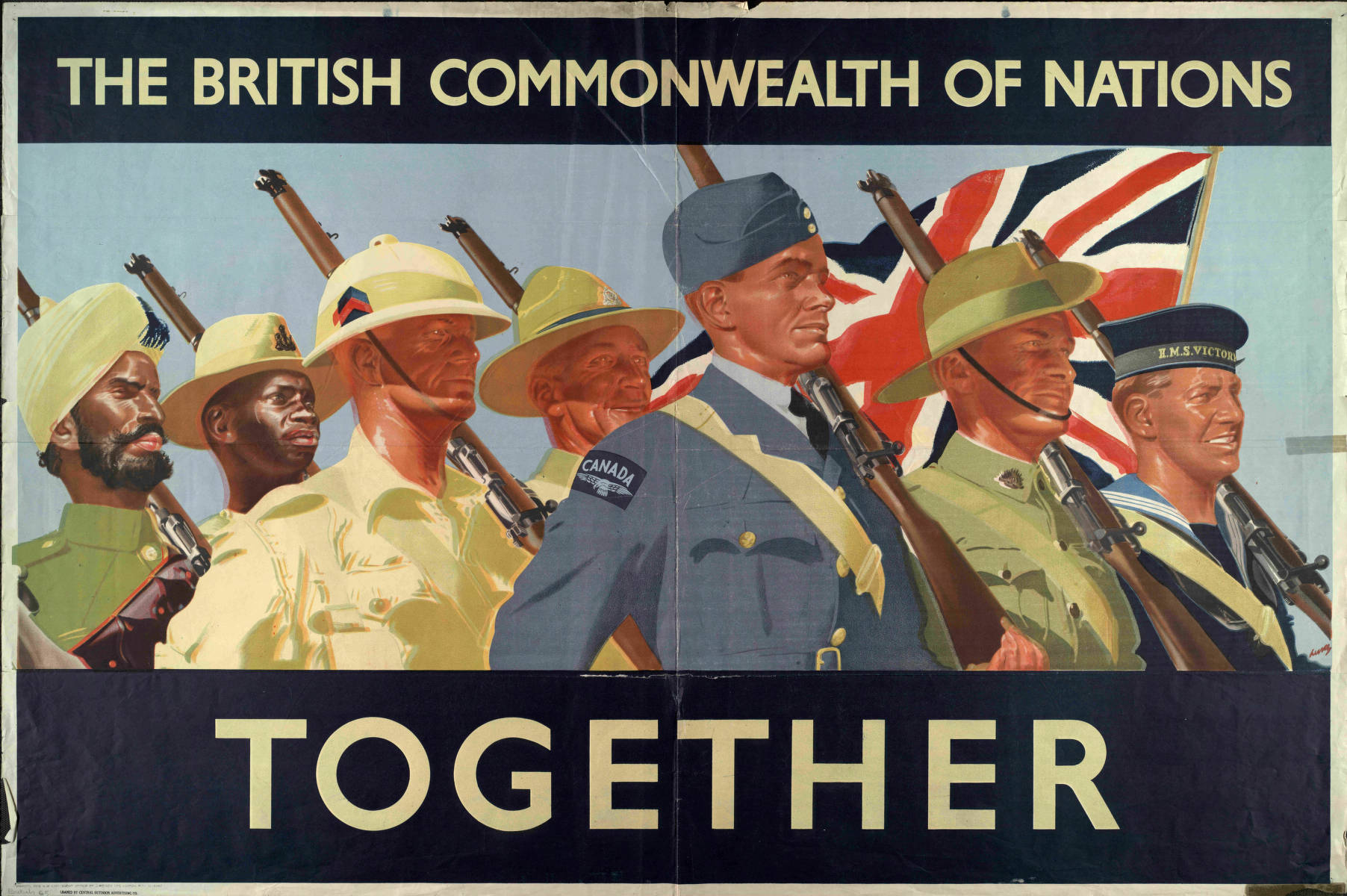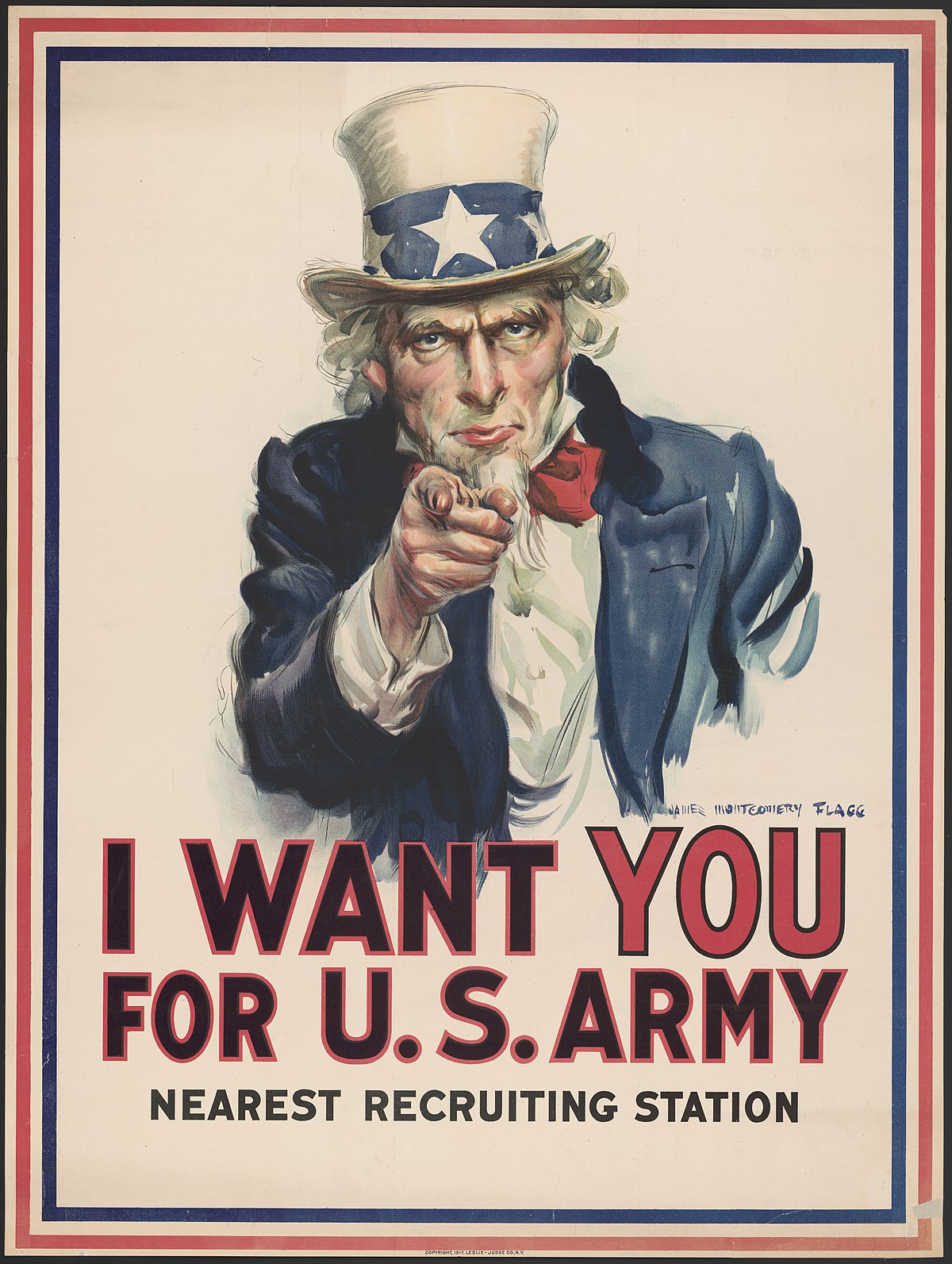Jed Quiaoit
VladimirGenkovski
AP World History: Modern 🌍
577 resourcesSee Units
World War II, like World War I, was a total war. Colonies of the Allied Powers, such as India (Britain), also joined the war, making it a truly global conflict on a much greater scope than WWI as it now included more countries in Asia, Africa, Europe, and even the Americas. Just look at the number of troops at peak strength:
Britain = 4.87 million, France = 5 million, United States = 12.36 million, Soviet Union - 12.5 million, Germany = 10 million, Italy = 4.5 million, Japan = 6.1 million
If you add all the rest countries, you will end up with a total number of troops equal to the populations of California and Florida together.
Mobilizing Populations
All countries, no matter their allegiance, undertook decisive steps towards popularizing their participation in the war and ensuring their success.
Using propaganda
Throughout all participant states, there were several main principles of propaganda that effectively swayed populations into supporting their country's war efforts:
1. Emphasizing the threat to national values and freedoms
Governments emphasized that the war was being fought to protect national values and freedoms and that the enemy posed a direct threat to these values. This helped to build a sense of national unity and purpose.
2. Personalizing the war effort
Governments used propaganda to personalize the war effort, highlighting the role of individual soldiers, sailors, and airmen, and emphasizing the sacrifices they were making for their country. This helped to build a sense of personal investment in the war.
3. Demonizing the enemy
Governments used propaganda to demonize the enemy, portraying them as ruthless, inhumane, and a threat to civilization. This helped to build a sense of hatred and determination to defeat the enemy.
4. Using celebrities and popular culture to promote the war effort (mainly Allied powers)
Governments used celebrities and popular culture to promote the war effort, for example, by having movie stars make films or give speeches in support of the war, or by producing songs and music that celebrated the war effort.
5. Communicating through various mediums
Governments used various mediums such as posters, films, newspapers, and radio broadcasts to reach a wide range of audiences.
6. Using censorship to control the narrative
Governments used censorship to control the narrative and shape public opinion, by heavily censoring the reporting of military losses and setbacks to maintain public morale, and by restricting the reporting of sensitive information that could be useful to the enemy.
7. Extending propaganda to colonies
The countries knew their imperial possessions could come in handy because of their resources. These included materials for production and additional soldiers. Raising morale by extending propaganda to colonies was one way to secure their loyalty to the empire and ensure their support for the war efforts. In many cases, the propaganda made people in colonies feel part of a greater union that fought together.
Examples of Propaganda
Great Britain used propaganda to boost morale at home and demonize the enemy through the efforts of the Ministry of Information. This was a special ministry that was first established at the end of World War I, dissolved, and then again created for the duration of World War II. The governmental institution was responsible for producing and distributing propaganda, which portrayed the British as heroic and the Germans as ruthless and barbaric. It emphasized the importance of national unity and the need to make sacrifices for the war effort.

British WWII propaganda post. Courtesy of Hennepin County Library.
United States President Franklin D. Roosevelt established the Office of War Information, which supported propaganda. The OWI produced a wide variety of posters that were displayed in public places throughout the country. These posters had powerful and emotive messages, such as "Uncle Sam Wants You," which encouraged men to enlist in the military and "Loose Lips Sink Ships," which reminded citizens that carelessly sharing information could aid the enemy.

Uncle Sam's "I want you". Image courtesy of Wikipedia
Japan's Naval Ministry commissioned the country's first animated film with a duration of a feature movie, "Momotaro: Sacred Sailors" as part of the national propaganda campaign. The film celebrated the heroism and sacrifice of Japanese soldiers. Numerous other movies were designed to build public support for the war effort and promote Japanese values such as loyalty and obedience.
Using ideologies
In terms of logistics and productivity, totalitarian regimes fell behind in mobilization efforts. Attitudes and policies made their war machines less effective as time went on, so they had to rely on promoting the war efforts even more to their populations. Apart from propaganda, countries made use of their political ideologies to mobilize resources.
Germany used the principles of Nazism to mobilize the state's resources for war. Italy and Japan did the same with Fascism's ideas. They all believed in the concept of "total war," where the entire nation was mobilized for the war effort, and all aspects of society were brought under the control of the state.
One way the regimes mobilized the state's resources for war was through the use of forced labor. The regime forced millions of people, including Jews in the case of Germany, prisoners of war, and civilians from occupied territories, to work in war-related industries. They also forced women and children to work in the factories and farms to replace the men who were fighting on the front lines.
The regimes also mobilized the state's resources for war by using the economy for war production. They implemented a command economy, where the government controlled all aspects of the economy, including production, prices, and wages. They also implemented a system of rationing to ensure that food and other necessities were distributed fairly among the population.
Germany
Adolf Hitler cunningly used an ideological foundation for his regime. It was based on the concept of National Socialism, which emphasized nationalism, anti-Semitism, and the belief in the superiority of the Aryan race. The Nazi regime was heavily centralized around the figure of Adolf Hitler, who had almost absolute power and was considered a demigod. This ideology played a central role in shaping government policies and the justification for the war.
Furthermore, the SS (Schutzstaffel), which was a paramilitary organization, was responsible for security, intelligence, and the implementation of Nazi policies, including the Holocaust. Some of the policies concerned the newly implemented command economy, where the government controlled all aspects of the economy, including production, prices, and wages. They also implemented a system of rationing to ensure that food and other necessities were distributed fairly among the population.
Italy
Another common characteristic of these totalitarian regimes was their charismatic leaders; a great example of this was Italy's prime minister Benito Mussolini. His speeches were often filled with lofty promises of a better future for the embittered Italian peninsula, which felt left out of the victory in World War I. These promises often ranged from boosting the economy to national pride and social improvement.
Italy's government also placed a strong emphasis on the concept of the corporate state, where different sectors of society, such as industry, agriculture, and labor, were organized into corporations and brought under the control of the state. This helped to build a sense of national unity and purpose. For example, there were a series of public works projects, such as the construction of new roads, buildings, and infrastructure. These projects helped to create jobs and improve the standard of living for many people, and were used to build support for the regime.
The fascist regime in Italy also emphasized traditional values, such as family, religion, and the importance of the rural way of life. Finally, it established youth organizations to promote fascist ideals, and it also implemented a system of conscription to train young men for military service.
Japan
Japan's fascist Emperor Hirohito took some unique approaches. He placed an emphasis on cultural and spiritual values, which included developing a cult of the Emperor. He was portrayed as a divine figure, and citizens were expected to show absolute loyalty and obedience to him. There was also a greater role of the military in the government and society. The military played a central role in shaping government policies and in decision-making, and they were heavily involved in the administration of occupied territories.
Soviet Union
The Soviet Union's communist regime under Joseph Stalin emphasized the importance of a centralized government, state ownership of the means of production, and the goal of creating a classless society. It implemented a policy of collectivization, where small farms were consolidated into large collective farms. This was done in order to increase agricultural productivity and to break the power of the kulaks (wealthy farmers).
Stalin had implemented a series of purges, where millions of people were arrested, tortured, and executed on charges of espionage, sabotage, and other crimes, but they also eliminated some of the most brilliant military strategists in Russia. To add insult to injury, a miscommunication between Stalin, Churchill, and Roosevelt delayed reinforcements to the eastern front of the European theatre, leading to millions of Soviets dying before his two allies’ reinforcements could finally arrive.
Military Technologies and Tactics
World War II featured upgrades of previously featured weapons. To name a few, tanks are now better adapted to more environments, more varieties of firearms are used based on the range of combat, and atomic weapons such as those infamously dropped on Hiroshima and Nagasaki have destructive capabilities hundreds of times deadlier than the classic mustard gas from WWI. The bombings killed around 200,000 people, mostly civilians, and caused long-term health effects to those who survived.
WWII is also the first conflict where civilians are purposely targeted as part of long-term military strategies in war. To encourage surrender, cities in Japan (Tokyo, Kobe) and Germany (Hamburg, Dresden) were continuously bombed, killing people by the thousands. The bombing campaign, which aimed to destroy the enemy's industrial and civilian infrastructure, killed hundreds of thousands of people, mostly civilians. The use of new naval weapons, such as radar-controlled guns and depth charges, led to increased casualties in naval battles. With the development of technology comes higher casualty rates, clear indicators of the inevitability of death and destruction in extreme times like war.
Under Winston Churchill’s leadership, Great Britain remained unfazed by Germany’s blitzkrieg (swift war) tactics. His military ingenuity allowed him to hold off Hitler’s forces after the fall of France in 1940 despite being close to the defeated nation. Churchill’s determination not to let Britain fall motivated him to forge an alliance with Franklin Roosevelt and the US, officiated after the latter joined the war in response to Japan’s bombing of Pearl Harbor in December 1941. Under the Lend-Lease Act, both countries were able to share (US lending Britain) war materials, weapons, and equipment necessary for repelling the Axis Powers.
Franklin Roosevelt took advantage of the war to mobilize the United States’s undamaged factories and ramp up their production of everything from ammunition to aircraft. By doing so, he gave the American economy the boost it needed, enough to get the US out of the Great Depression. Like WWI, women were given ample opportunities in the job market, and production rates were at all-time highs once again. The US also led the liberation efforts in the Pacific, which was the other major war theatre, against Japan through an “island hopping” strategy.

Locations where the atomic bombs were dropped. Photo courtesy of Wikimedia.
Browse Study Guides By Unit
🐎Unit 1 – The Global Tapestry, 1200-1450
🐫Unit 2 – Networks of Exchange, 1200-1450
🕌Unit 3 – Land-Based Empires, 1450-1750
🍕Unit 4 – Transoceanic Interactions, 1450-1750
✊🏽Unit 5 – Revolutions, 1750-1900
🚂Unit 6 – Consequences of Industrialization, 1750-1900
💣Unit 7 – Global Conflict, 1900-Present
🥶Unit 8 – Cold War & Decolonization, 1900-Present
✈️Unit 9 – Globalization, 1900-Present
✏️Frequently Asked Questions
🤔Exam Skills
👉🏼Subject Guides
📝AMSCO Notes

Fiveable
Resources
© 2025 Fiveable Inc. All rights reserved.